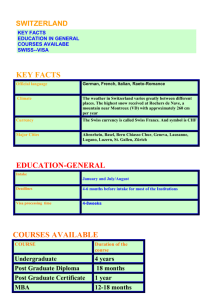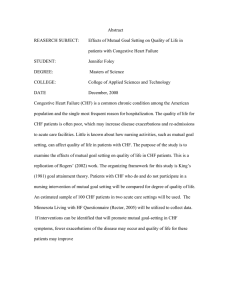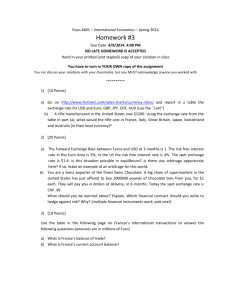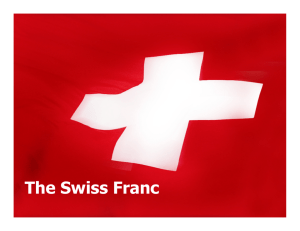technical components
advertisement
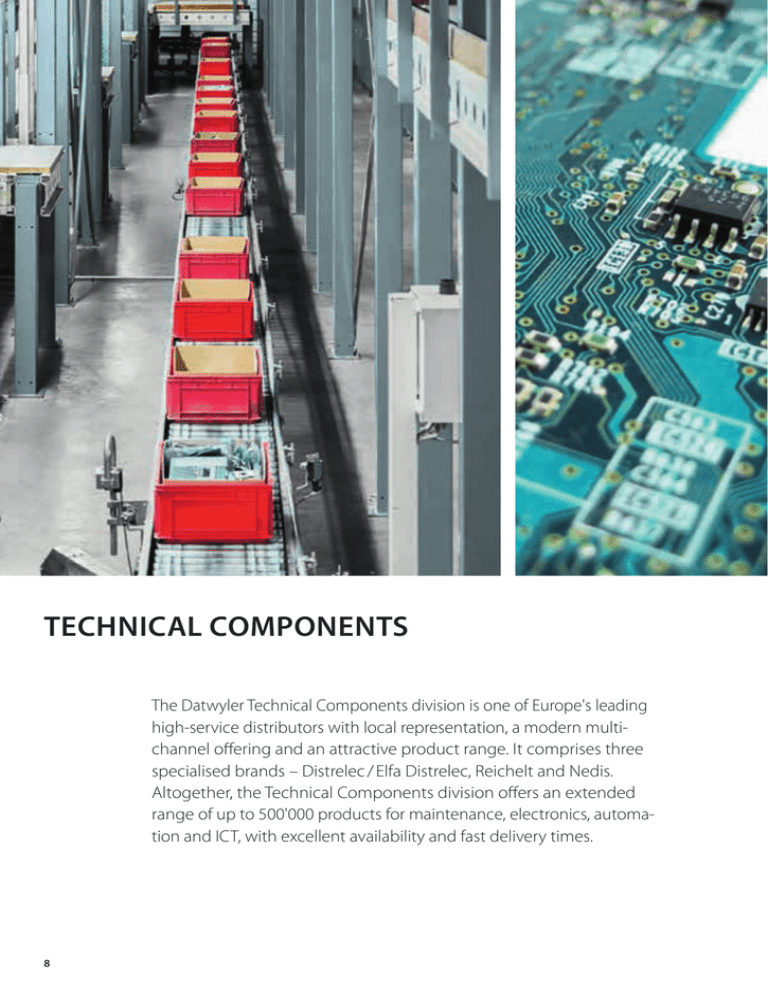
TECHNICAL COMPONENTS The Datwyler Technical Components division is one of Europe's leading high-service distributors with local representation, a modern multi­ channel offering and an attractive product range. It comprises three specialised brands – Distrelec / Elfa Distrelec, Reichelt and Nedis. Altogether, the Technical Components division offers an extended range of up to 500'000 products for maintenance, electronics, automation and ICT, with excellent availability and fast delivery times. 8 Target groups Products and services – Industrial companies – High-tech design and manufacturing – Small to medium-sized businesses –Retailers –Wholesalers – Technical schools and universities – Government agencies and administrations – Private customers – Maintenance, repair and operations – Electronic components and accessories –Automation –Connectors – Electrical engineering – I&C equipment – ICT components and accessories – Building technology and building automation – Alarm and security technology Geographical markets –Europe 9 TECHNICAL COMPONENTS Datwyler Annual Review 2015 Shared infrastructure platform provides firm foundations for the future Under its new management team, the Technical Components division worked successfully on rapidly implementing its strategic integration projects in 2015, creating a shared infrastructure platform that will firm foundations for future organic and acquisitory growth. Thanks to significant improvements in product availability, shorter delivery times and higher satisfaction rates, Distrelec managed to increase the number of active ­customers and revenue during the last quarter. Although net revenue from continuing operations fell by a further –2.4% in organic terms in 2015 despite encouraging early signs, this is due in part to the challenging market environment for distributors of ­elec­tronic goods as well as Distrelec’s unsatisfactory supply capability in the first half year. Another factor was the rising Swiss franc, which had a greater-than-expected impact on performance in Switzerland and resulted in negative currency effects worth CHF 54.8 million or –10.4% on the conversion of foreign revenue. Reported net revenue thus dropped to CHF 459.3 million (previous year: CHF 526.5 million for continuing operations excluding Maagtechnic). Pressure on margins due to lack of revenue, a strong franc and one-time costs The reported operating result (EBIT) fell to CHF 0.3 million (previous year: CHF 24.0 million for continuing operations excluding Maagtechnic). Aside from the lack of sales volume and the negative effects associated with translation into Swiss francs, this is mainly due to provisions on existing stock and price reductions in Switzerland as a result of the rising franc. Datwyler also incurred one-time costs in a bid to accelerate its integration projects. Excluding these negative extraordinary effects, adjusted EBIT stood at CHF 13.1 million, which equates to an ­adjusted EBIT margin of 2.5%. Integration projects almost fully implemented The implementation of strategic integration projects remained on track throughout 2015 and focused on the shared infrastructure platform. This includes a central distribution centre for the European markets (except Switzerland) in the Netherlands and a joint procurement setup in China for the Distrelec and Nedis brands. In addition, there are a shared service centre in Latvia, a uniform SAP solution and a modern webshop for the Distrelec brand. The main advantage of the new platform is the much-improved shopping experience that it gives the customer. Distrelec and Nedis hit the ground running, making significant improvements in 2015 in terms of product ­availability and delivery times in particular. Customers have also been very positive about the new webshop. The search function, product information and user-friendliness are being enhanced continuously. Following the move to relocate the German warehouse and logistics organisation to the central distribution centre in the Netherlands in late 2014, its Swedish counterpart was also transferred successfully by early November 2015. At a stroke, this effectively revolutionised the delivery process, the SAP solution and the webshop for no fewer than 14 countries across northern and eastern Europe. Despite the complexity of this migration exercise, customers from these regions benefited immediately from having 50,000 additional products available for delivery within 24 hours and 10 percentage points higher availability across the entire range. These operational improvements have a direct impact on customer satisfaction and increase the potential for growth. During the first half of 2016, Distrelec will move on to migrating the Swiss, Austrian and Italian markets to the shared infrastructure platform, whereas the warehouse in Switzerland remains unchanged. 10 TECHNICAL COMPONENTS Datwyler Annual Review 2015 Key figures of Technical Components in CHF millions 2015 2014 Net revenue EBIT EBIT margin Total assets Gross capital expenditure Number of full-time equivalents (at year-end) 459.3 0.3 0.1% 361.2 11.0 1'231 565.8 22.5 4.0% 352.6 14.4 1'283 Loyal customer base represents an opportunity for Distrelec Although Distrelec continued to lose small amounts of market share during the year under review, the latest ­customer surveys indicate that the brand enjoys a very loyal customer base in the markets it serves. Distrelec ­intends to exploit this fact in future in order to win over passive customers with an improved shopping experience and get them making regular purchases again by continuously improving its key performance indicators. ­Distrelec’s repositioning is being driven forward by a much-revamped management team featuring industry experts. The much-higher availability of products and the addition of 40'000 new ones to the range are proving to be major drivers of growth. The emphasis is on the high-margin maintenance and automation business as well as on highquality components for electronic design and prototyping. Reichelt successfully expanding in Europe Reichelt performed well again during 2015, positioning itself as a provider that delivers good quality at competitive prices. The brand has successfully offset the decline in demand from private customers by growing its corporate customers and expanding into new European countries. Reichelt is also aiming for further profitable growth in 2016 by expanding its range by around a third. Nedis making progress despite tough conditions In spite of the strong headwind buffeting the consumer electronics segment during the year under review, Nedis nevertheless made further progress. As an attractive complement to its multinational retailer and online provider customers, Nedis stepped up its efforts to cultivate small and medium-sized retailers. In future, Nedis will increase its cross-selling activities and supplement its existing range with further products. Outlook: the right strategy for profitable growth Now that we have the shared infrastructure platform for several brands, we firmly believe that we have the right strategy for generating profitable growth again from 2016 onwards. Building on a much-improved shopping experience, by 2017 we intend to get back at least to the level of revenue we enjoyed in 2013. Combined with the improved margins delivered through joint procurement, increases in operating efficiency and economies of scale in terms of personnel and operating expenses, this will enable us to achieve an EBIT margin in excess of 10% again. As well as accelerating organic growth, Datwyler will also be able to use its shared infrastructure ­platform to ensure that any companies it acquires are integrated easier. 11
